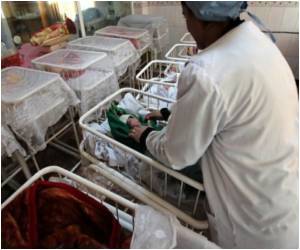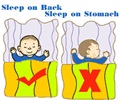Withholding lifesaving measures and withdrawal of life-sustaining support seems to be the primary modes of infant deaths in neonatal intensive care units.

Julie Weiner, D.O., of Children's Mercy Hospital in Kansas City, Mo., and colleagues examined medical records of 414 infants who died between January 1999 and December 2008 at a regional referral neonatal intensive care unit to determine if trends towards decreasing use of cardiopulmonary resuscitation (CPR) at the end-of-life for infants in neonatal intensive care units (NICU) had continued into present day.
Of the 414 infant deaths included in the study, 45 percent were due to major congenital anomalies (also known as birth defects; a physical anomaly that has cosmetic or functional significance), 17 percent of these infants were very preterm. Thirty-five percent of deaths were of very preterm births without congenital birth defects. During the ten-year follow-up period, 61.6 percent of infant deaths followed withdrawal of treatment, 20.8 percent followed withholding of treatment and 17.6 percent died despite attempted CPR.
The percentage of deaths that followed withholding of life-sustaining treatment also increased by an average of 1.03 deaths per year during the study's follow-up period. Most of this change was accounted for in very preterm infants (32 weeks or less gestation). For very preterm infants, deaths following withheld treatment increased by 0.7 per year, and during the study follow-up period, withholding of care significantly increased from less than 10 percent to more than 30 percent. Additionally, the use of CPR at death tended to decrease during the same time period.
"During the ten-year period, the primary mode of death in this regional referral neonatal intensive care unit was withdrawal of life-sustaining support," the authors conclude. "Significant increase in withholding of care suggests improved recognition of medical futility and desire to provide a peaceful death."
Source-Eurekalert










